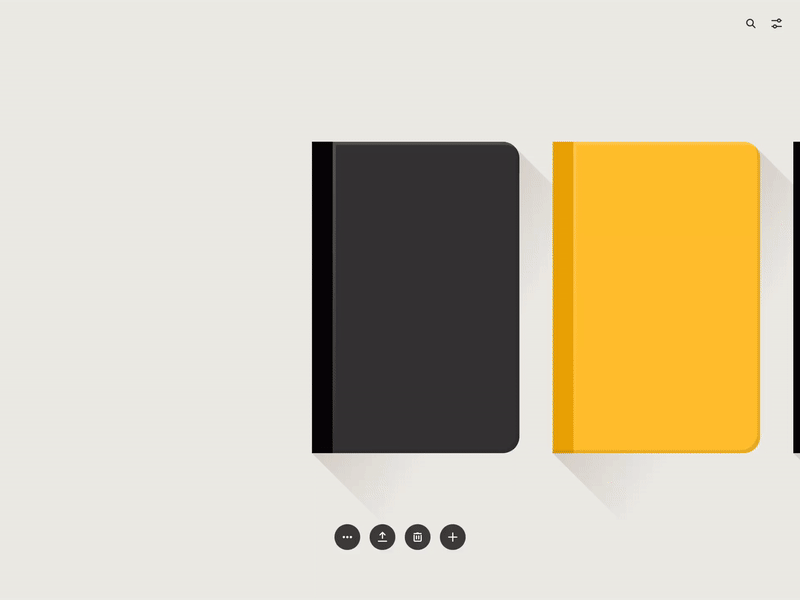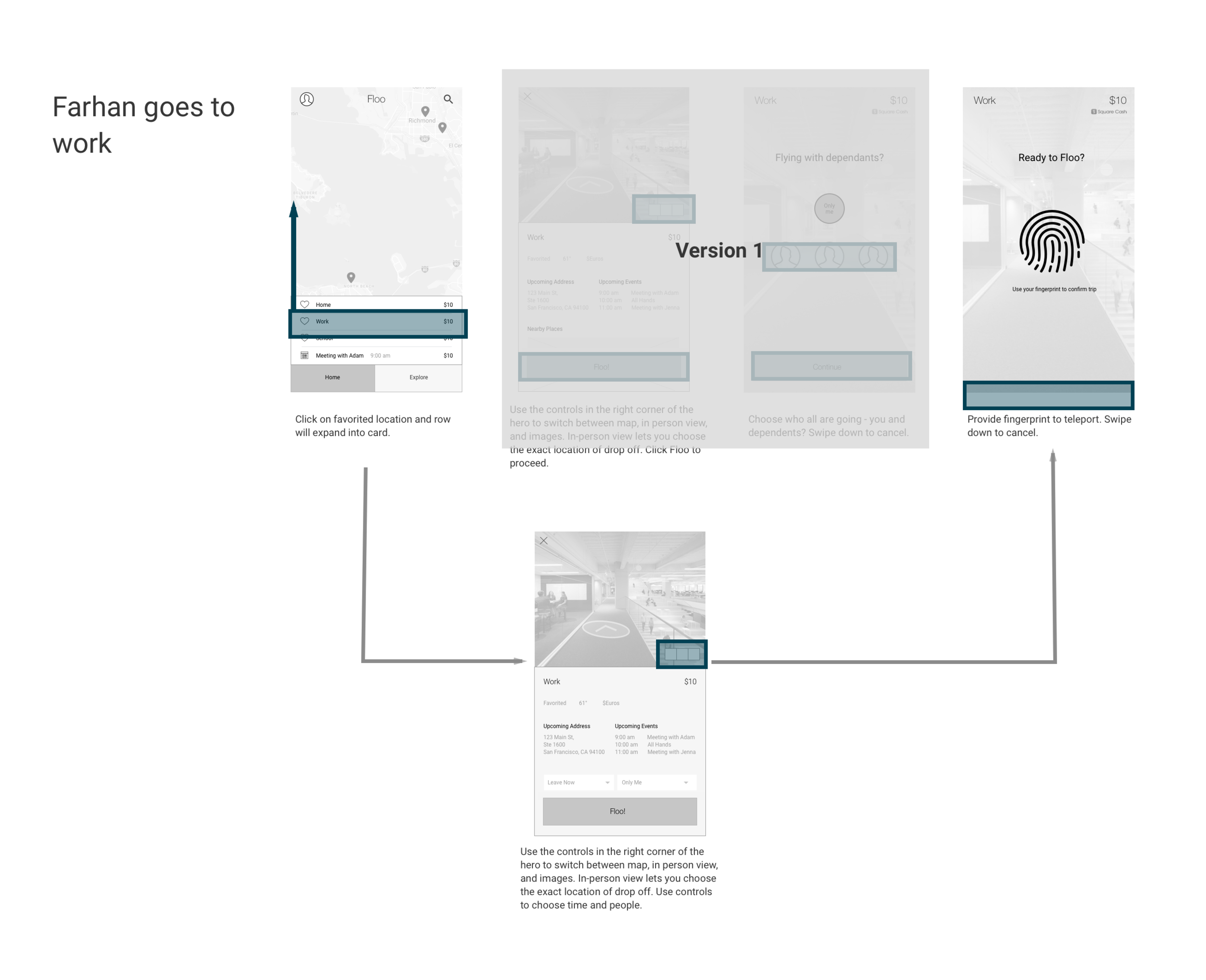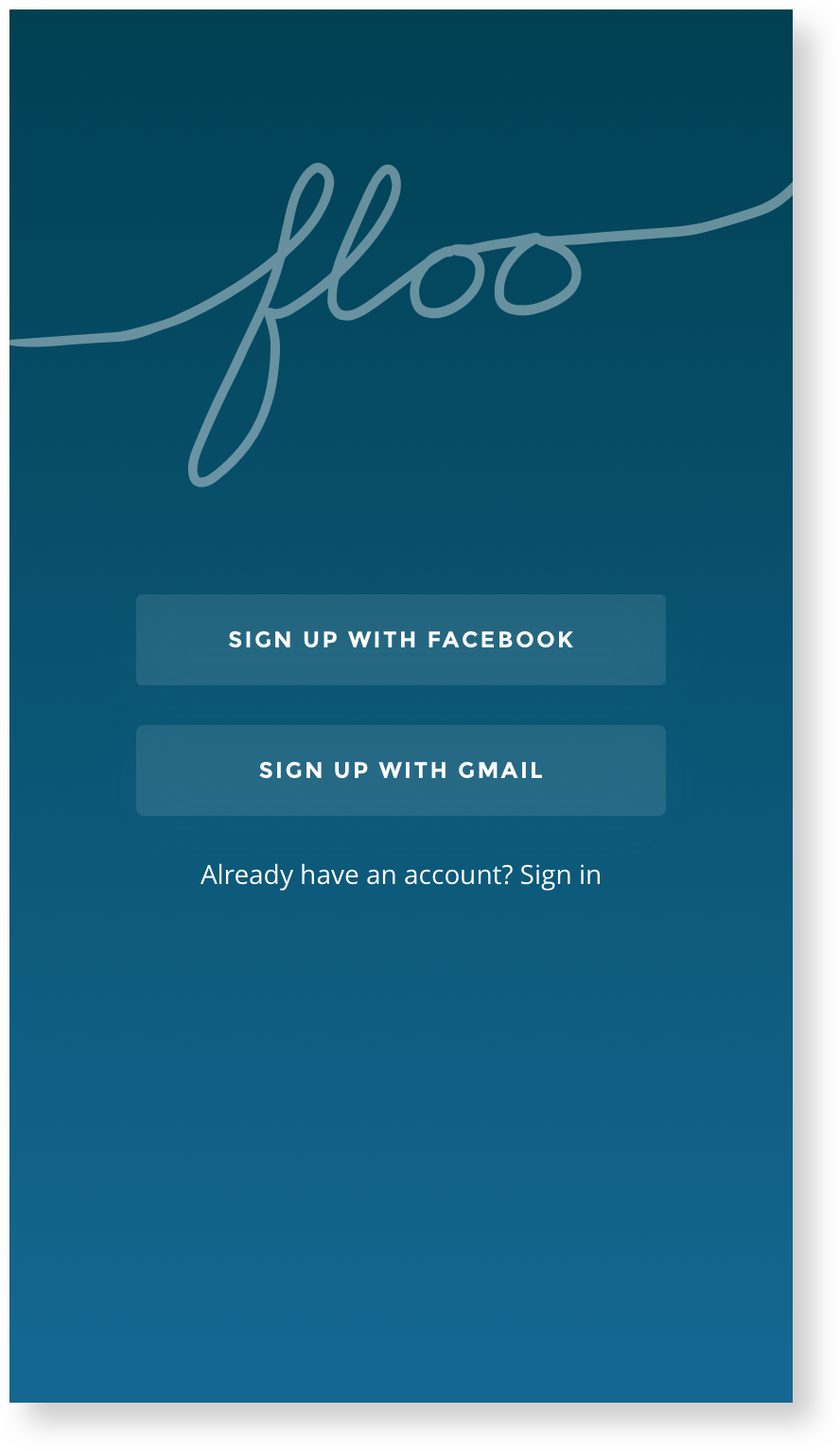Introducing Floo
Teleportation is no longer theoretical - it's reality.
Inspired by Harry Potter's floo powder, the world's best quantum physicists and developers have now brought teleportation to the masses. For decades, it has felt like the world was getting smaller yet we couldn't get anywhere quicker. Now, you can go anywhere in an instant.
The Challenge
- Design a mobile iOS app that uses teleportation to transport you from one place to another instantaneously.
- The app should teleport you to places you visit regularly, places you visit infrequently, and view places you've teleported to in the past.
My Process
Stakeholder Research
Using a stakeholder interview guide, I pretended to interview the SMEs on the Floo team, to explore the project and understand limitations.
Why this project now?
- On a daily transportation level - whether driving or on public transportation, so much time is now spent in transit, rather than doing the things you love.
- While travel is becoming cheaper and more people are engaging in international travel, vacation times haven’t risen in the last 20 years. In 1992, the average number of PTO days for a 5 year tenure was 13 days; in 2012, it was 14. People feel like they have access to more of the world but would rather spend their time on holiday than on a plane.
Technical & Legal Limitations
- Immigration rules still apply for international travel. The traveler still needs to pass through an immigration officer and have a passport. Mobile passports are fine for US citizens coming back to the US - but a physical passport is needed to leave the country.
- Technically, a person has to be touching all items they want to carry with them at the moment of teleportation.
- Adults can travel with children under 12, but everyone over 12 needs to have their own account and travel individually.
User Research & Personas
To dive into the user mindset, I did guerrilla research on 5 of my friends, asking questions about:
- daily commute woes
- stories about the last time they traveled on vacation - how they chose the place, what was stressful, what was enjoyable
- how they plan around travel
- the last time they tried a new technology - what intrigued them, what caused worry
Using these insights, I was able to come up with two distinct personas to inspire scenarios and design opportunities.
Key Takeaways
For Farhan, our designs need to
- Allow an easy way to indicate that he is traveling with his children
- Surface frequently traveled locations
- Align with his schedule and calendar
- Build trust regarding this new mode of transportation
For Becca, our designs need to:
- Allow for trip planning with others
- Employ social media to inspire her travels
- Simplify the immigration process
- Inform her destination selection
Scenarios & Sketching
To jumpstart and focus the design phase, I came up with scenarios for both Farhan and Becca. Using this framework, I sketched out what these user flows would require in the product. This exercise helped me identify crucial elements of the system:
- What is it that Floo can do for the users, and more importanly, what is it that it should do?
- How does Floo fit into their daily lives?
- What are the natural app and OS-level feature integrations?
- Where should we focus our acquisition energy?
Farhan's Scenarios
Late for a meeting, Farhan discovers and signs up for Floo (onboarding)
Farhan goes to work (frequent location)
Farhan gets a call that his daughter got sick on the school field trip (unexpected trip to new location)
Farhan goes to a 9 am meeting in Austin (planned event in new location)
Becca's Scenarios
Becca plans a trip with her best friend Leah for labor day weekend (planning a trip to a undiscovered international location)
Becca sends her mother all the pictures from last week's trip (Reviewing past trips)
Sample Scenario & Sketch: Late for a meeting, Farhan discovers and signs up for Floo
Acquisition
By writing out this scenario and fleshing out the design in sketches, I realized that the best way to acquire new users is to integrate with Google Maps, much like Uber and Lyft have. This way users will be intrigued by the fact there is a 0 minute option.
Building Trust
Through sketching I also realized that to build trust around teleportation, the user should be able to test it out before purchasing. Moreover, it would be better if a selected Floo representative could teleport to them rather than the user having to take that first risk.
See all scenarios and sketches here.
Wireframes
From my sketches, the rough shape of the system began to take form.
What I learned through wireframing
- Reviewing past trips is a secondary action. Going to places you frequently visit and discovering new places takes precedence.
- We have to optimize for teleporting alone and teleporting now. Scheduling for later and adding dependents and inviting others is additional complex functionality.
- We need to provide multiple ways to browse new locations. Both the single card and grid view of location images allow users to pick where they want to go. Users can also filter their exploration using immigration requirements, weather, hobbies, and safety status.
- Security features around traveling with dependents. Teleportation creates opportunity for crimes such as kidnapping. The user should be able to add children under their profile using their child's fingerprint and other identification. Then, when teleporting with a child, both parties provide a fingerprint to confirm.
OS-level features
- Fingerprint or Face ID (in iPhone X) to confirm trip
- Integrating with calendar to up-level upcoming events and include scheduled trips in all calendars
- Gather information from weather app
- Integrating with photos, filtering by location and time stamp to show pictures taken during trips
- Integrate with contacts to share and send invitations
- Apple Pay
Integrations with Other Apps
- Google Maps as a lead-in to Floo and for map data
- Instagram to show images from people who follow or might follow
- Spotify to provide recommendations to places based on music/concerts you would enjoy
- Yelp to gather restaurant recommendations
- Square Cash for payments
- US Mobile Passport App
Final Solution
How might we create a quick, seamless teleportation experience?
Prototype Instructions
Click/Swipe Work - Click on Floo! - Click on Thumbprint
My initial concept took inspiration from familiar transportation apps like Google Maps, Lyft, and Uber. Similar to these apps, Floo opens onto a map-based interface. A key difference was that I removed the indication of current location. If time and distance is not a factor, the space between current and desired location becomes irrelevant.
Frequent locations and upcoming events are presented as cards on the home screen for quick access. These cards take the user to a location detail page that defaults to 1st-person POV. This feature allows the user to select exactly which spot they want to teleport into. After choosing to teleport, the user is presented with a confirmation screen to mitigate accidental clicking.
Cool Feature
A point of interest about the confirmation screen is that it has the 1st-person POV of your destination laid under the command. Upon confirmation, the blue overlay will fade and the last image you see will resemble the place you see when you look up from your phone.
How might we allow for engaging and informative exploration of new places?
Prototype Instructions
Click on Explore in Nav - Toggle between grid and single card - Click/Swipe up on Paris - Click on Map Grid - Click on 1st Person POV
We exist in such a visual, socially driven world. Sources such as Instagram and travel blogs are the catalyst for vacations. To build on this concept, location exploration in Floo is a media-driven experience. The user can choose to explore by swiping between individual cards that show defining information like weather, visa requirements, food/music qualifications, and safety status. Alternatively, they can dive in through a grid, where they're truly inspired by image alone. They're also given the capability to filter the recommendations given to them.
Similar to the quick access experience of favorite locations, these cards expand to reveal the detail page. Here, the user can choose between swiping through images or viewing the location on the map. On a map, the user can view their landing spot in 1st-person POV to feel more confident about their trip to an unknown place. To build even more confidence, the trip details not only provides information about fun activities, but things to watch out for and what to pack.
How might we make immigration painless?
Prototype Instructions
Click on Floo! - Click on Passport - Click on Fingerprint
One of the main challenges that Floo faced was creating a solution for current immigration policies that do not allow open borders. But challenges often inspire the best solutions. By providing three forms of identification (passport scan, facetiming with an immigration officer, and fingerprint), we are able to comply with policies while making it a easy and fun experience for users.
Next Steps
I would do quick usability testing to get some validation on flows.
I would also explore the pricing structure of the service. My current hypothesis and recommendation is to use a tiered pricing model, to differentiate ourselves from other transportation services that employ market pricing. What use would teleportation be if their time was then being wasted figuring out whether they should teleport now or hold off based on price.
















